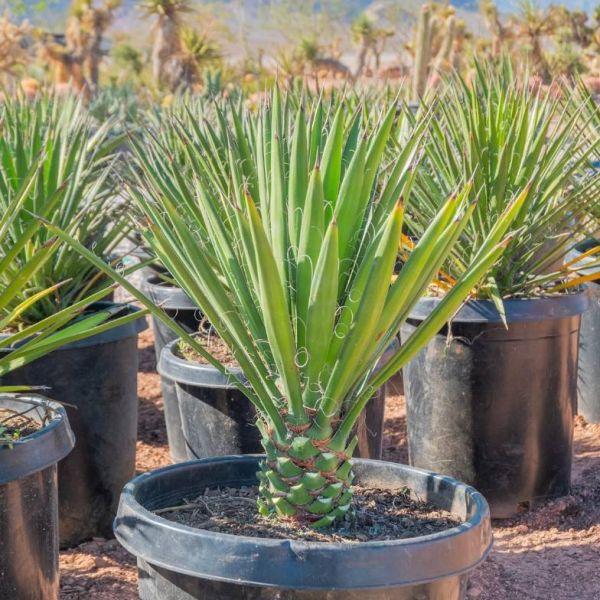Yucca Filifera Seeds (Palma China)
Yucca Filifera Seeds (Palma China)
Requires any well drained soils. Will tolerate light to moderate freezes and is best suited to warm temperate/subtropical areas.

Delivery
All orders shipped with UPS Express.
Always free shipping for orders over US $250.
All orders are shipped with a UPS tracking number.
Returns
Items returned within 14 days of their original shipment date in same as new condition will be eligible for a full refund or store credit.
Refunds will be charged back to the original form of payment used for purchase.
Customer is responsible for shipping charges when making returns and shipping/handling fees of original purchase is non-refundable.
All sale items are final purchases.
Help
Give us a shout if you have any other questions and/or concerns.
Email: contact@domain.com
Phone: +1 (23) 456 789
Availability: In stock
SKU
Yucca Filifera
Yucca Filifera is also named St-Peter's palm, Dragon Yucca, Adam?s Needle, Spanish bayonet, Roman candle, or Needle palm. This tree belongs to the Agavaceae family and is native to Mexico. Multi-headed Dragon Yucca filifera is one of the largest growing yuccas, reaching heights of 30 ft, with a trunk diameter up to 5' across.
This tree-like species has 20" diameter spherical heads composed of numerous sword-shaped leaves at the ends of arm-like branches giving the plant a fairy-tale quality. The massive trunks are tall and solitary at first and start branching with age. This Yucca has rigid leaves that form a compact, rounded crown. It is in leaf all year, and its numerous green leaves are about 1" wide and up to 2" long, arising from the base, sharp pointed on ends, and margins with thread-like curly filaments. The leaves are erect when they are young but they become arched when they get older.
The Dragon Yucca blooms from July to August. The flower spikes are about 4` in length and strongly pendulous, with hanging nearly white flowers of 1-2" long. The flowers are hermaphrodite (have both male and female organs) and have to be pollinated by hand.
Hardiness zones: 7-10 (-15C/ 5F, 1C/35F) in winter. The Yucca Filifera requires any well drained soils. It will tolerate light to moderate freezes and is best suited to warm temperate/subtropical areas.
| Common name | St. Peter's Palm |
|---|---|
| Species | Yucca filifera |
| Germination | Sow the Yucca seeds in a gritty mix of peat, coco fiber, vermiculite and perlite, sand or similar media. Fill shallowly in trays or pots and sow the seeds on the surface. Cover the seeds with a thin layer of soil, about as thick as the seeds are. Label with species name and date. Do not cover the mix with plastic or glass. Place the trays or pots at temperatures between 25 and 30øC (75 to 90øF) in a brightly lit spot but out of full sun and keep slightly damp but never wet. The seeds will sprout reliably after a few days or weeks. |
| Price View | Price Range |

